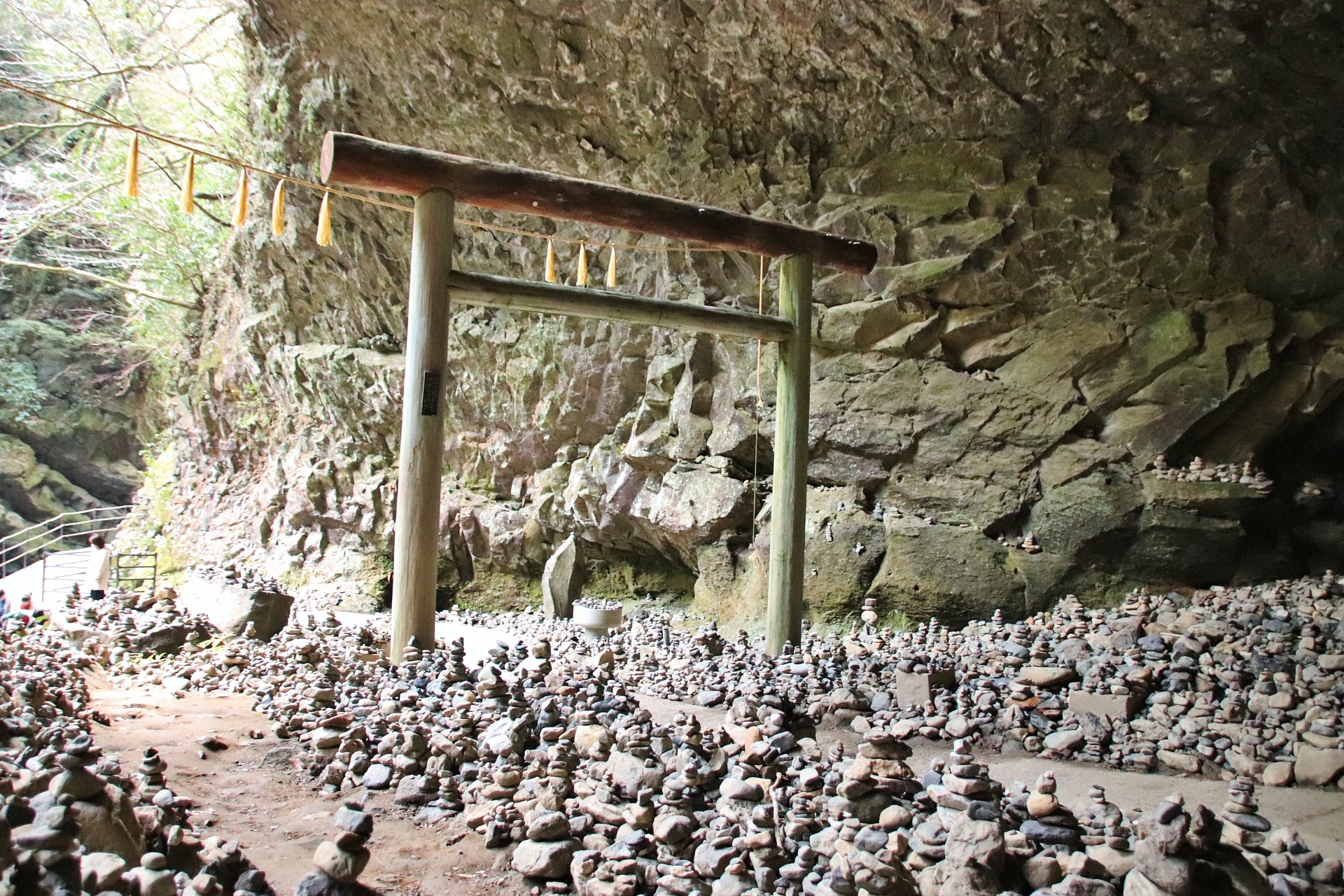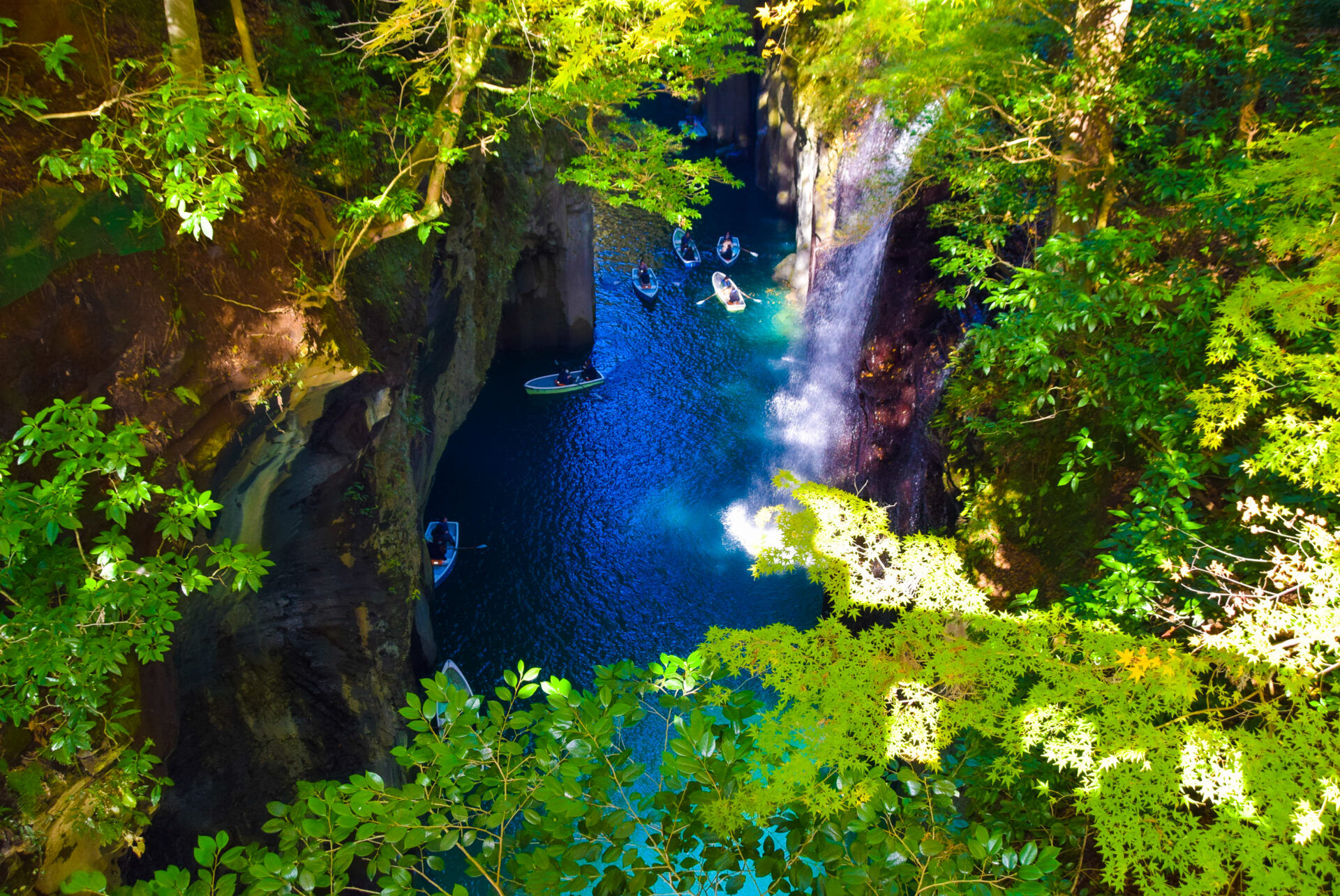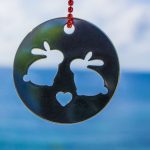
Miho Shimizu is a Japanese freelance writer settled in Shizuoka with her husband and two rabbits. Fascinated with traveling at the age of 18, she has spent most of her long holidays exploring incredible spots around Japan. She also loves to listen to music, draw, and read novels over a cup of green tea.
This post may contain some affiliate links. When you click through and make a purchase we may receive some commission, at no extra cost to you.
Japanese mythology is full of legendary stories and folktales that are associated with the origin of this beautiful country. Japanese mythology is said to date back as old as 2,000 years ago, and it is a source of Japanese history, tradition, and worship of gods that are all worth learning. The legendary stories are surprisingly creative with emotional characters, and the lives of the gods are filled with difficulties and challenges just like what we experience in modern times. What is Japanese mythology? How was it originally created? How is it associated with religions such as Shintoism and Buddhism? Here we will introduce an overview of Japanese mythology and some of its famous stories and deities!
What is Japanese mythology?
Basically, Japanese mythology is a collection of legendary stories and traditional folktales that have been passed down since ancient times in Japan. The oldest Japanese mythology can be found in historical documents such as Kojiki (古事記) and Nihon-shoki (日本書記) which were written in the early 8th century.
Japanese mythology was created based on the worship of nature, which is the key to understanding the principle of Shintoism. Shintoism is a Japanese indigenous religion which is said to date back to prehistoric times. In Shintoism, deities are believed to be present in everything from living creatures to natural phenomena. More specifically, nature such as the sun, mountains, rivers, and oceans are all regarded as deities. This is the reason why deities that are involved in Japanese mythology are often worshiped at Shinto shrines across Japan. We can also find the elements of traditional Buddhist beliefs that have had an influence on the creation of Japanese mythology.
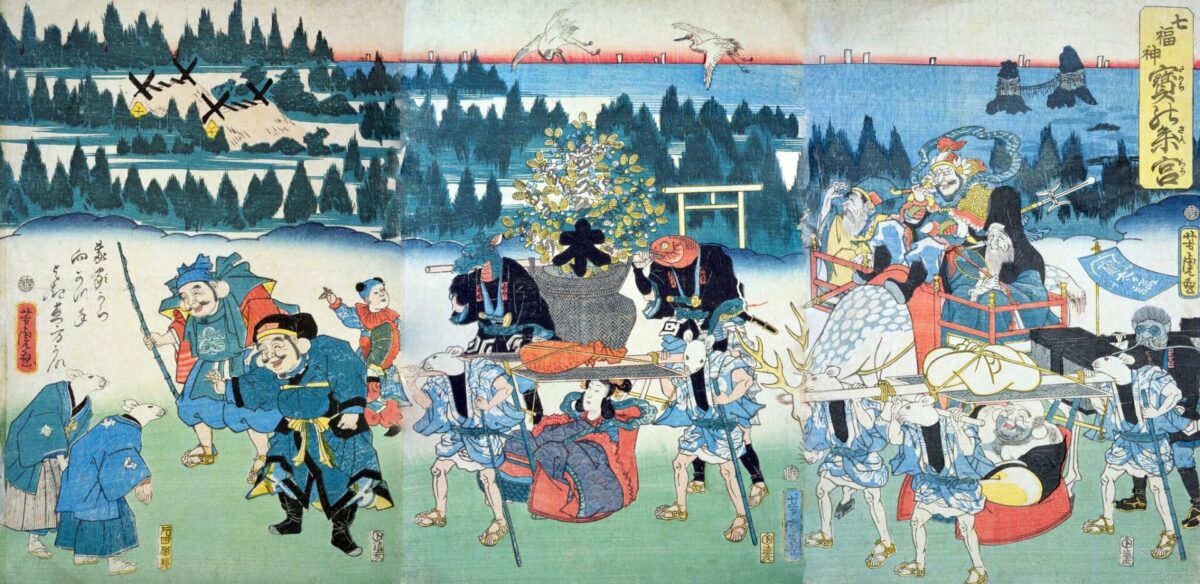
Japanese Creation Myth
Japanese mythology starts with the primitive story called “Japanese Creation Myth”. This part of the story interestingly describes the birth of the universe and the first generations of Japanese deities. The following stories involve the legends of deities who created the islands of Japan. According to some legendary stories, their descendants later became the first emperor in Japan known as “Emperor Jimmu (神武天皇)”.
Mythical Creatures
There are also a variety of stories about mythical creatures and animals that appear in Japanese mythology. Some of the creatures that appear in Japanese mythology are Tengu (天狗), Dragon (竜) and Kappa (河童) which are also often found in traditional Japanese folklore. These creatures don’t exist in reality, but have been loved as symbolic creatures in Japan for centuries.
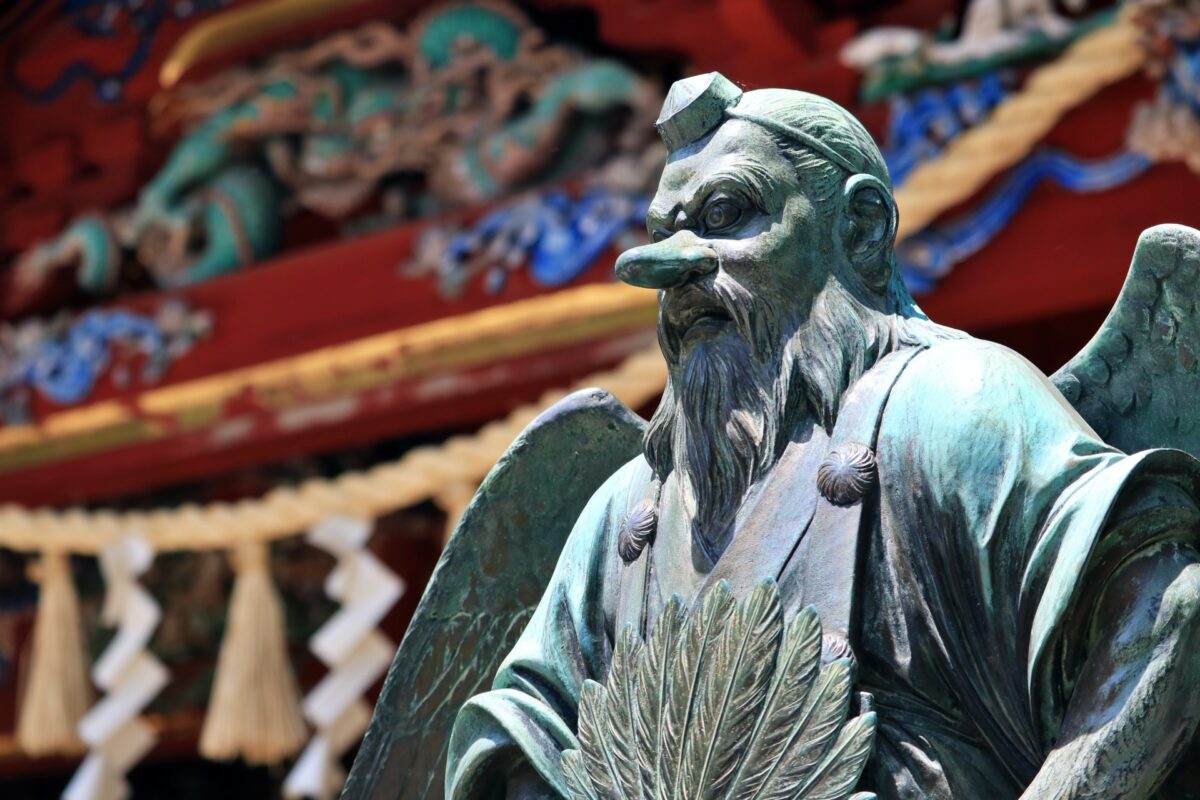
Famous Deities & Stories in Japanese mythology
Izanagi (イザナギ) & Izanami (イザナミ): The divine and tragic couple
Izanagi (イザナギ) & Izanami (イザナミ): The divine and tragic couple
Izanagi was among the 7th generation of the first gods who were born in Takamagahara, a heavenly place for gods to live in. He got married to his sister Izanami (イザナミ), and they became a divine couple. They received the mission to create a world with a sacred spear. From a celestial bridge, Izanagi pointed the spear down towards the ocean, where the very first island of Japan called “Onokoro island”, suddenly emerged from the water. They landed on the island, and gave birth to the next generation of gods.
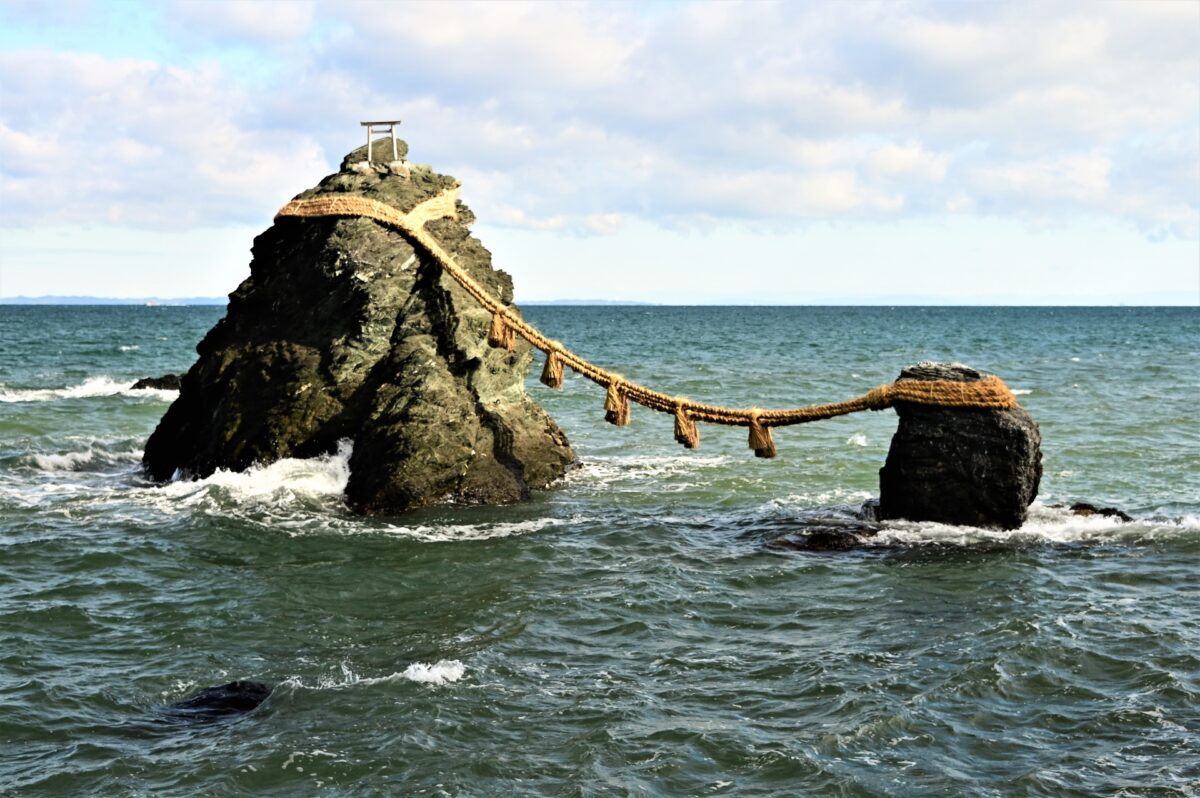
However, their first offspring who was named Hiruko (ヒルコ), came out without limbs and bones, physically deformed. They placed their son on a boat and abandoned him in the ocean. Unfortunately, their second child was also unsatisfactory, so they didn’t treat him as their child.
They returned to heaven, and asked the other deities for advice. They figured out that it was because Izanagi, the famous male deity, didn’t take initiative during their marriage ceremony. They conducted the ceremony once again, but this time properly, which resulted in the birth of eight islands which make up the major islands of Japan today.
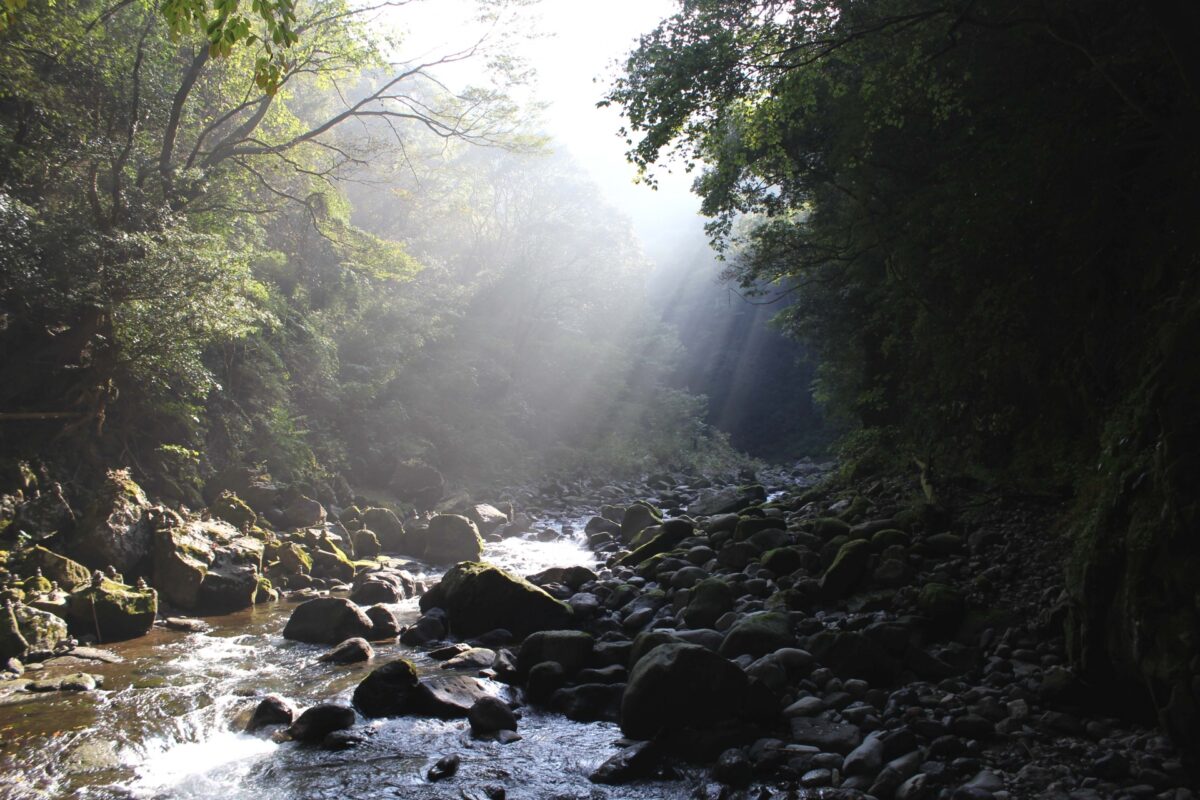
Amaterasu (天照大神): The goddess of the sun
Amaterasu was the daughter of Izanagi and Izanami. She is depicted as the goddess of the sun, agriculture, and peace in Japanese mythology. She is also the ruler of heaven, and is historically known as the ancestor of the Japanese Imperial family.
She is famous for the legendary story in Japanese mythology called “Amano-Iwato”. In this story, she was puzzled by the arrogant behavior of her brother known as “Susanoo” (スサノオ), the god of the sea. One day, she got upset by his selfishness, was devastated, and decided to hide herself from the rest of the world. She rushed to a dark cave and blocked the entrance with a giant stone so that no one could enter.
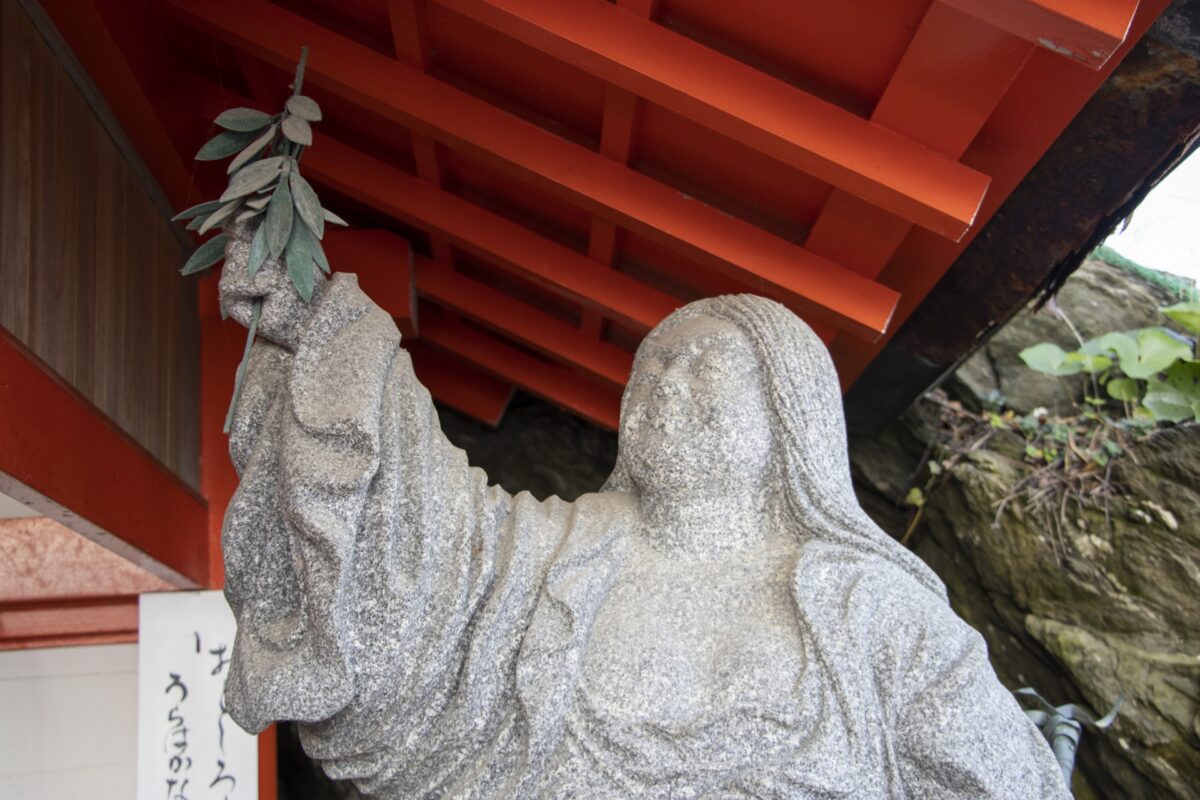
After she disappeared, the world lost the light from the sun and was completely dark. Other deities were at a loss, and they gathered at the cave to persuade her to come out, which ended up not being successful. Suddenly, one of the deities came up with a great idea. They started a party with musical instruments and a dance performance in front of the cave. The party was full of enjoyable sounds of singing, dancing and laughing. Out of curiosity, Amaterasu peeked out of the cave to see what was going on outside. At the moment she slightly opened the entrance of the cave, one of the powerful deities pulled her out of the cave, and she returned to the world with her light again.
Surprisingly, Amano-Iwato actually exists in reality, and anyone can visit the legendary spot to directly feel the mystic atmosphere. It is located in Takachiho area, Miyazaki prefecture in Kyushu which is best known for the stunning gorge scenery. Also, if you want to visit Amaterasu, visit Ise grand shrine located in Mie prefecture!
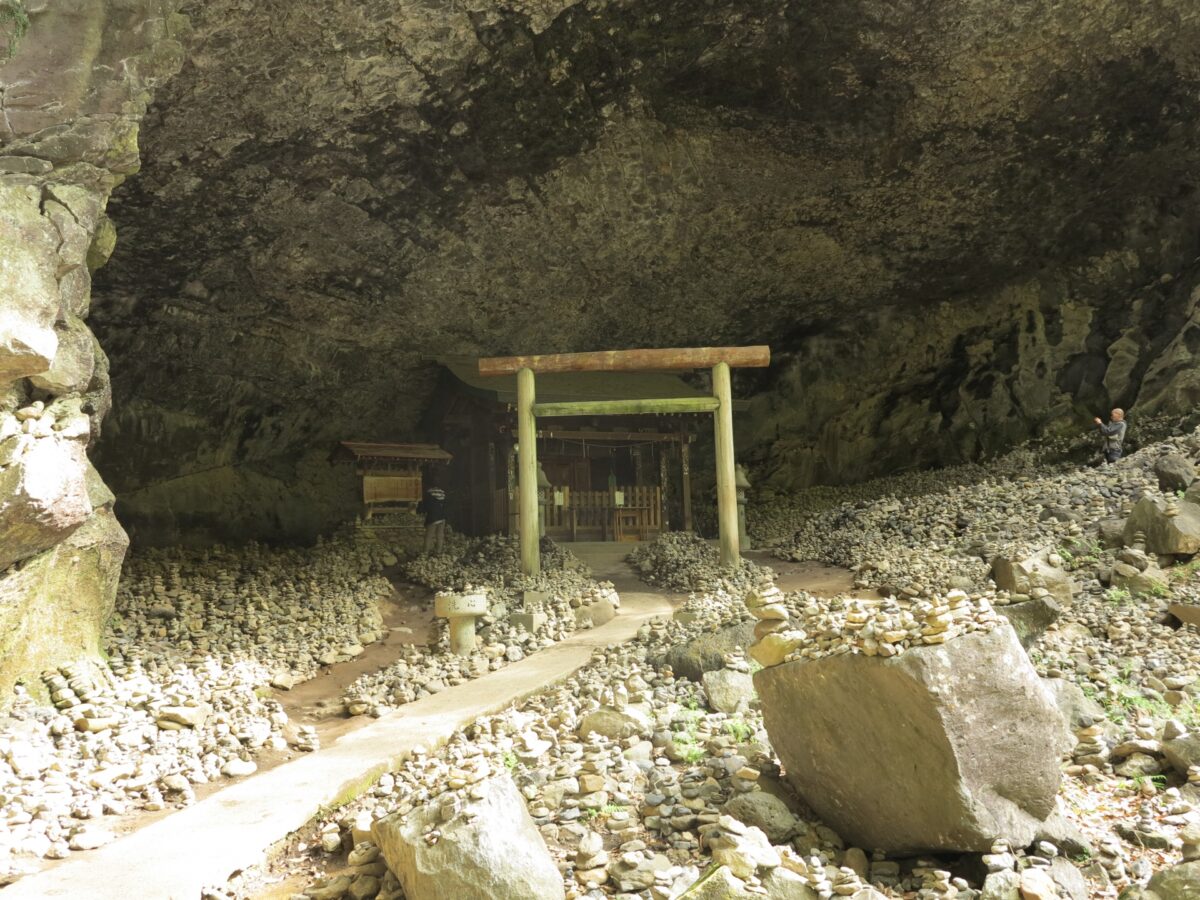
Apart from the stories we introduced above, there are many more stories in Japanese mythology that are worth reading about. Each story is not only interesting to read, but also contains meaningful messages from ancient times. If you are also interested in Japanese history, have a look at our other articles below to understand how Japan has developed into one of the biggest countries in the world and the history of the last 2,000 years!
Japan Wonder Travel Tours
Japan Wonder Travel is a travel agency that offers guided tours throughout Japan.
From private walking tours to delicious Food and Drink tours, we can help you organize the best tours just for you! If you want to explore Japan and learn more about the history and backstories of each area you are visiting, our knowledgeable and friendly English speaking guides will happily take you to the best spots!
In addition, we can provide you with any assistance you may need for your upcoming trip to Japan, so please feel free to contact us if you have any questions or need some help!
▶Tokyo Tsukiji Fish Market Food and Drink Tour
Explore the most lively and popular fish market in Tokyo and try some of the local’s favorite street foods and sake with one of our friendly and knowledgeable English speaking guides!

▶Tokyo 1–Day Highlights Private Walking Tour (8 Hours)
There’s no better way to explore an area than taking a tour with a knowledgeable local guide. You will have the chance to learn about the history and interesting background stories of Tokyo, as well as discover some hidden gems which can be hard to do without a guide.

▶Mt. Fuji Day Trip Bus Tour from Tokyo
Experience the breathtaking views of Mt. Fuji by visiting the highlights of the area on our guided sightseeing bus tour! Departing from Shinjuku in central Tokyo, you can travel comfortably to all of the best spots in the area by bus.

▶Kyoto Private Full Day Walking Tour
On this full-day private tour of Kyoto, you will be able to see the highlights of Kyoto in just one day and at the same time develop a deeper understanding of both the culture of the area and Japan as a whole.

Follow us on Instagram, Facebook, Twitter, and TikTok for more travel inspiration. Or tag us to get featured!
Happy traveling!
